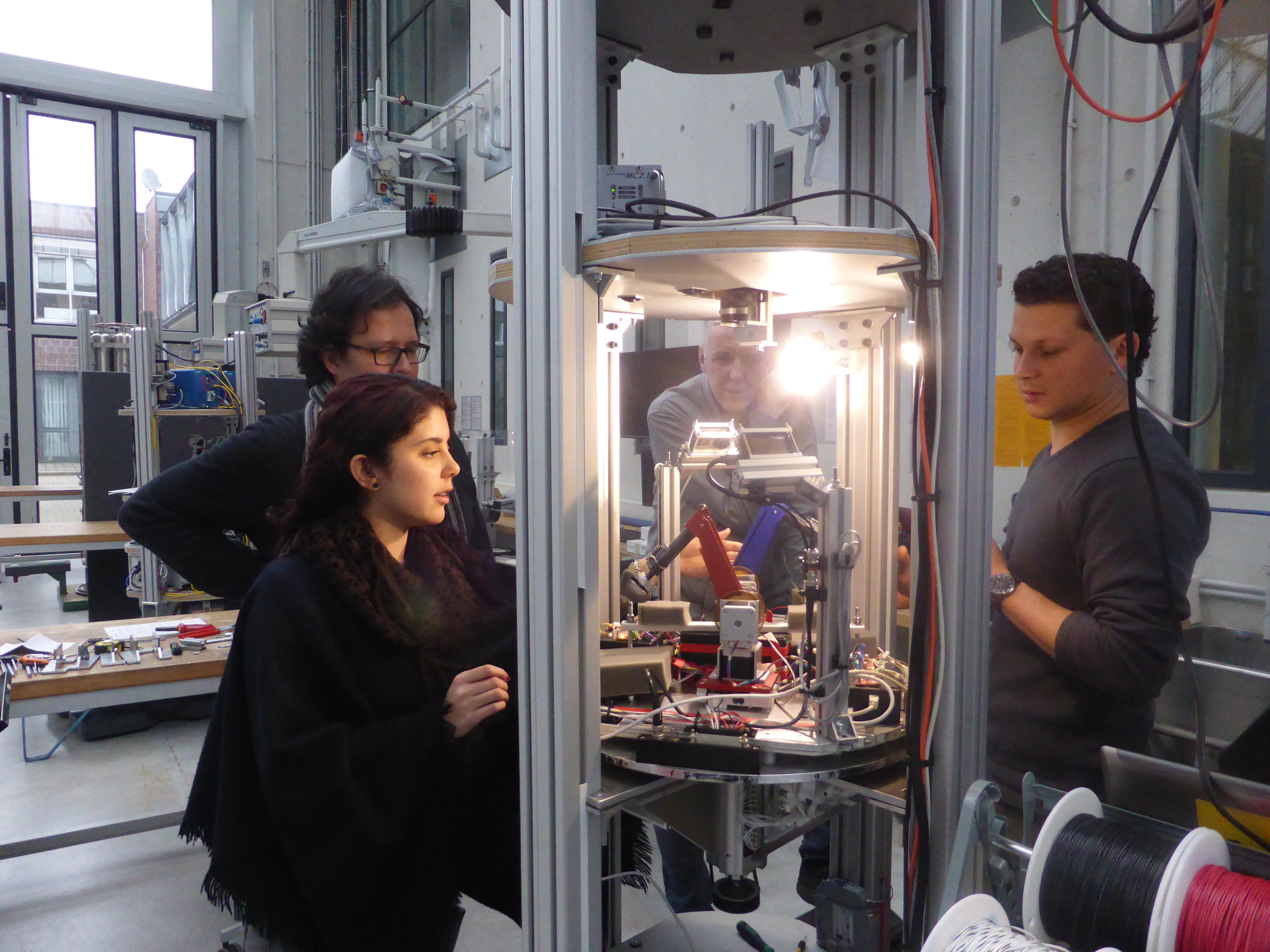Drop Tower Experiment Series (DropTES) 3rd cycle
A Costa Rican team, composed of students from Instituto Tecnológico de Costa Rica (TEC) and from Universidad de Costa Rica (UCR), supervised by a professor from TEC, was the winner of the fellowship of DropTES 3rd cycle. The team was formed by TEC students Nicole Chaves-Jiménez and Carlos Mayorga-Espinoza, UCR students Ernesto Corrales-Corrales and Moacir Fonseca-Becker, and the TEC advisor Dr. Renato Rimolo-Donadio. The theme of the proposed experiment was "Behaviour of a reduced-scale robotic arm manipulator under microgravity conditions".
Robots play significant roles in space exploration missions. A good example is robotic arms on the International Space Station (ISS). The significance will increase toward future deeper human space exploration missions, in that tests through robots are crucial before humans embark on deep space. In order to contribute to such future exploration missions, the team had the objectives to expand the technical knowledge and information, through drop series in DropTES, on the behaviour of a reduced-scale robotic arm manipulator such as dynamics, motion, and control under microgravity conditions.
For the drop series, the team designed robotic arms with two joints on a base which could rotate. These instruments simulate robotic arms on-board a rotating spacecraft in outer space. The model is intended to achieve microgravity caused by the drop from the Bremen Drop Tower as well as centrifugal force caused by the rotating base.

The team started preparation work in May, which included drafting of experiment progress reports and a couple of teleconferences with ZARM. Despite a challenge to find suitable facilities to manufacture the instruments, the team managed to complete them and conducted ground-based experiments before the drop series at the Bremen Drop Tower.
The drop series took place once a day from 22 to 25 November. Among the four drop series, the team tested different conditions. In comparison with the first two drops, the third drop was conducted without rotation of the base, and the last drop was conducted with higher rotation.

At the first drop toward the end of the drop period, the team encountered an unexpected phenomenon that the robotic arms hit the base and bounced back to collide with mechanical parts inside the capsule. However, the team managed to deal with the challenge by putting cushion materials on the base to alleviate the impact.

The team is satisfied with the results and now analysing the acquired data in detail back in Costa Rica for the final report and further research activities.

Click here to watch video of the drop scene!
The final report submitted by the team and published magazine are available.
The team is planning to present their technical result at the International Aeronautical Congress (IAC) 2017, in Adelaide, Australia.